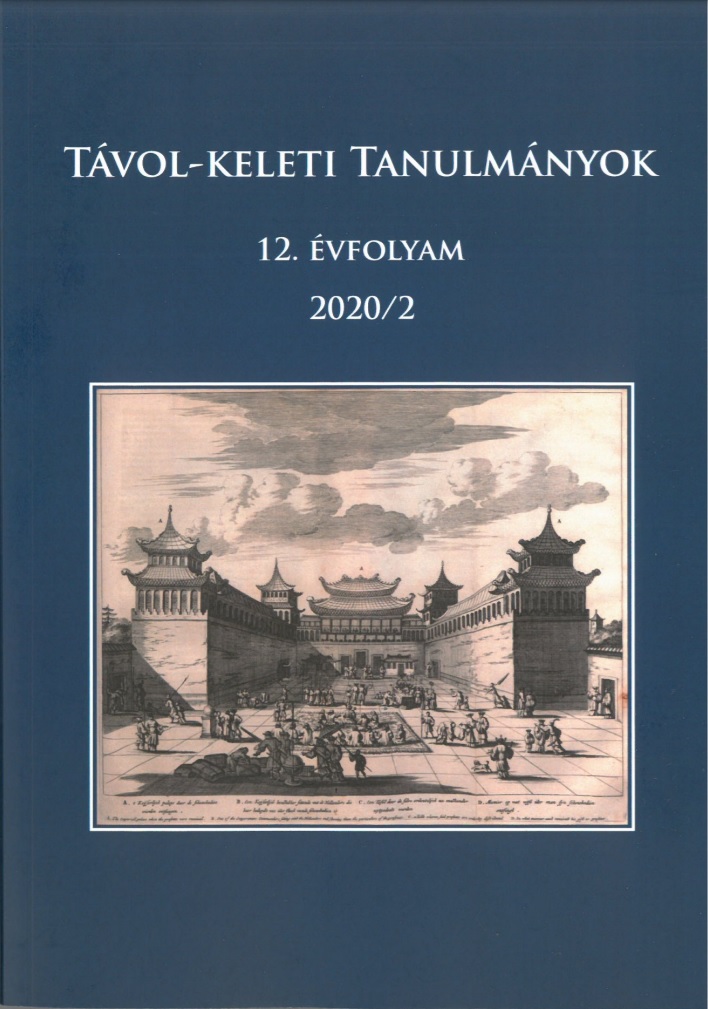Megjelent 2021-07-12
Kulcsszavak
- otthon,
- migráció,
- kínai bevándorlók
Hogyan kell idézni
Copyright (c) 2021 a szerző(k)

This work is licensed under a Creative Commons Attribution-NonCommercial 4.0 International License.
Absztrakt
Az otthon egy olyan összetett fogalom, mely erősen támaszkodik a szubjektív élményekre és azok interpretációjára. Az otthon és az otthonérzet kiemelt fontosággal bír a bevándorlók életében és a migrációs folyamatok során azzal együtt, hogy fokozatosan átértékelődik, újabb jelentéstartalmakkal is bővül. Az elmúlt harminc évben kínai bevándorlók hozták létre az egyik legjelentősebb diaszpórát Magyarországon. Hátrahagyva Kínát új otthonukat a fogadó ország társadalmának merőben eltérő kulturális közegében kellett megteremteniük. Kultúrák és országok között felnövekvő gyermekeik pedig ugyancsak egyedi otthonképet alakítottak ki maguknak. Ez a tanulmány 139 résztvevő bevonásával készült kutatás eredményeit mutatja be, melyen keresztül igyekszik feltárni, hogy hogyan alakul az eltérő migrációs háttérrel rendelkező kínai bevándorlók otthonképe és az otthon fogalmának megalkotása.
Hivatkozások
- Ahmed, Sarah 1999. „Home and away: Narratives of migration and estrangement.” International Journal of Cultural Studies 2/3: 329–347.
- Ahuja et al. 2010. „Are House Prices Rising Too Fast in China?” IMF Working Paper. No.10/274. Elérhető: https://ssrn.com/abstract=1751386. (2021. január 18.)
- Brah, Avatar 2002. Cartographies of Diaspora: Contesting Identities. London: Routledge
- Cheng et al. 2016. „Housing property rights and subjective wellbeing in urban China.” European Journal of Political Economy 45: 160–174.
- Cuba, Lee – Hummon, David M. 1993. „Constructing a Sense of Home: Place Affiliation and Migration across the Life Cycle.” Sociological Forum 8/4: 547–572.
- Csikszentmihalyi, Mihaly – Rochberg-Halton, Eugene 2002. The meaning of things: Domestic symbols and self. Cambridge: Cambridge University Press.
- Damery, Shannon 2014. „Going Home:Migrants Imagined Connections and Home Creation.” Université de Liège – CEDEM: Working Paper. Integrim online papers 3/2014. Elérhető: https://www.integrim.eu/wp-content/uploads/2014/02/Damery-Going-home-Migrants-imagined-connections2.pdf. (2021. január 18.)
- Dúll Andrea 2009. Helyek, tárgyak, viselkedés. Környezetpszichológiai tanulmányok. L’Hartman.
- Fei Xiao Tong 费孝通 1998. „Jāngtǔ zhōngguó 乡土中国 [A kínai szülőföld]。” Peking 北京:Beijing University Press 北京大学出版社.
- Foner, Nancy 1997. „The Immigrant Family: Cultural Legacies and Cultural Changes.” The International Migration Review 31/4: 961–974.
- Foner, Nancy – Dreby, Joanna 2011. “Relations Between the Generations in Immigrant Families.” Annual Review of Sociology 37: 545–567.
- Fukuyama, Francis 1996. Trust: The Social Virtues and the Creation of Prosperity. New York: Free Press.
- Hage, Ghassan 2010. „Migration, Food, Memory, and Home-Building.” In: Radstone, S. – Schwarz, B. (eds.): Memory: Histories, Theories, Debates. New York: Fordham University Press. 416–427.
- Huang, Grace Hui-Chen – Gove, Mary. 2012. “Confucianism and Chinese Families: Values and Practices in Education.” International Journal of Humanities and Social Science 2/3: 10–14.
- Kochan, Dror 2016. „Home is where I lay down my hat? The complexities and functions of home for internal migrants in contemporary China.” Geoforum 71: 21–32.
- Liu, Liangni S. – Didham, R. – Lu , Jun 2017. „Mapping Chinese Return Migration from New Zealand: A Quantitative Data Analysis from a Comparative Perspective.” Diaspora 19/2–3:159–228.
- Ma, Guansheng 2015.„Food, eating behavior, and culture in Chinese society.” Journal of Ethnic Foods 2: 195–199.
- Mallett, Shelley 2004. „Understanding home: A critical review of the Literature.” The Sociological Review 52/1: 62–89.
- Petridou, Elia 2001. „Taste of Home.” In: Miller, D. (ed.): Home possessions: Material culture behind closed doors. Oxford: Berg. 87–106.
- Qazimi, Shukran 2014. „Sense of place and place identity.” European Journal of Social Sciences Education and Research 1/1: 306–311.
- Ralph, David – Staeheli, Lynn A. 2011. „Home and Migration: Mobilities, Belongings and Identities.” Geography Compass 5/7: 517–530.
- Staeheli, Lynn A. – Nagel, Caroline R. 2006. „Topographies of home and citizenship: Arab-American activists in the United States.” Environment and Planning 38: 1599–1614.
- Wu, Yue F. – Hannam, Kevin – Xu, Hong G. 2018. „Reconceptualising home in seasonal Chines tourism mobilities.” Annuals of Tourism Research 73.C: 71–80.
- Zhang et al. 2016. „Finding a Sense of Home crossbar the Pacific in Old Age— Chinese American Senior’s Report of Life Satisfaction in a Foreign Land.” J Cross Cult Gerontol 32: 31–55.
- Zhang, Xin-an – Cao, Qing – Grigoriou, Nicholas. 2011. „Consciousness of Social Face: The Development and Validation of a Scale Measuring Desire to Gain Face Versus Fear of Losing Face.” The Journal of Social Psychology 151/2: 129–149.

